advantages of Nano products in medicine; nanotechnology medical applications Despite its infancy, nanomedicine—the application of nanomaterials in medicine—is projected to have substantial benefits for healthcare. Substantial government investment and legislation are enabling swift advances in nanomedicine research. In terms of efficacy, bioavailability, and dose-response, nanomedicines have the potential to be safer and more effective than traditional pharmaceuticals. The significance of nanotechnology in medicine and the preservation of human lives Nanotechnology has grown considerably in recent decades and has the potential to transform the healthcare industry. According to a recent study, nanotechnology has resulted in new surgical discoveries. Using light to image For traditional imaging of cells and tissue slices, organic dyes are introduced into the sample. Fluorescein isocyanate and rhodamine, for example, typically attach to biomolecules that selectively bind to cells or biological components via ligand-receptor interactions. In this imaging approach, two major problems are insufficient fluorescence intensity and photobleaching. Photobleaching is the gradual decrease of fluorescence intensity that occurs over time when the chemical structure of the dye molecules changes in an irreversible fashion. As a result, the dye molecules are no longer fluorescent. QDs are nanoparticles that are composed of inorganic semiconductor molecules. These nanoparticles emit bright fluorescent light when exposed to ultraviolet (UV) radiation, and the wavelength (color) of the emitted fluorescent light varies with particle size. The size dependence of these materials distinguishes them. The presence of a “band gap” determines the properties of inorganic semiconductor molecules.  The band gap is the difference in energy between the valence band (or energy level) occupied mostly by electrons and the conduction band, which can be “increased” by delivering energy of a specific wavelength (excitation). When an electron goes from the valence band to the conduction band, a “hole” is frequently left behind (this is a term given to an electron-less energy level and is not a physical property). When the excitation ends, the electrons return to the valence band and expel their excess energy. In the case of QDs, this energy is entirely freed as light. Larger QDs can absorb and release more energy because they have more electron-hole pairs. Because energy is inversely related to wavelength, the wavelength of the generated light increases as the size of the QD increases. QDs emit significantly brighter light than typical organic dyes and are far less susceptible to photobleaching. This is a huge advantage for 3D imaging of tissue because it is hard to get sequential z-sections because of photobleaching. QDs are insoluble in aqueous solutions because they are inorganic substances. As a result, coating QDs with a thin layer of water-soluble chemicals is critical to their use in biological and medical applications. Then, typically, a chemical that selectively binds to a certain cell or cell component is coated. Each QD has a large number of surface areas where soluble and/or bioactive compounds can be attached. Furthermore, each QD can be linked to more than one type of molecule, allowing it to perform many roles. A review of how QDs are used to take pictures of living cells showed that there are many ways to change the surface, such as targeting and staying in the bloodstream for a long time. These QDs are made of CdTe coated with CdSe, a material that emits light when stimulated in the near-infrared range. The capacity to map lymph nodes up to 1 cm below the skin’s surface without the need for surgical incisions is significant in this work. This study did not investigate how toxic injected QDs are, and the authors determined that the levels used were less than what is known to be detrimental. By coating the QD surface with relevant compounds, QDs can be guided to certain organs in the body. QDs were also guided into the blood or lymphatic veins into tumors in animals. Target cells were eaten by target cells in both cases via endocytosis, but not by surrounding tissue cells.
The band gap is the difference in energy between the valence band (or energy level) occupied mostly by electrons and the conduction band, which can be “increased” by delivering energy of a specific wavelength (excitation). When an electron goes from the valence band to the conduction band, a “hole” is frequently left behind (this is a term given to an electron-less energy level and is not a physical property). When the excitation ends, the electrons return to the valence band and expel their excess energy. In the case of QDs, this energy is entirely freed as light. Larger QDs can absorb and release more energy because they have more electron-hole pairs. Because energy is inversely related to wavelength, the wavelength of the generated light increases as the size of the QD increases. QDs emit significantly brighter light than typical organic dyes and are far less susceptible to photobleaching. This is a huge advantage for 3D imaging of tissue because it is hard to get sequential z-sections because of photobleaching. QDs are insoluble in aqueous solutions because they are inorganic substances. As a result, coating QDs with a thin layer of water-soluble chemicals is critical to their use in biological and medical applications. Then, typically, a chemical that selectively binds to a certain cell or cell component is coated. Each QD has a large number of surface areas where soluble and/or bioactive compounds can be attached. Furthermore, each QD can be linked to more than one type of molecule, allowing it to perform many roles. A review of how QDs are used to take pictures of living cells showed that there are many ways to change the surface, such as targeting and staying in the bloodstream for a long time. These QDs are made of CdTe coated with CdSe, a material that emits light when stimulated in the near-infrared range. The capacity to map lymph nodes up to 1 cm below the skin’s surface without the need for surgical incisions is significant in this work. This study did not investigate how toxic injected QDs are, and the authors determined that the levels used were less than what is known to be detrimental. By coating the QD surface with relevant compounds, QDs can be guided to certain organs in the body. QDs were also guided into the blood or lymphatic veins into tumors in animals. Target cells were eaten by target cells in both cases via endocytosis, but not by surrounding tissue cells.

nano products in medicine Cellular drug delivery in medicine products Future Nano medicine Thoughts Without a doubt, the field of nanomedicine will take decades to develop. Before we let our imaginations run wild with nanomedicine’s promises, perhaps we should consider the capabilities that are actually feasible. When we pay attention to how different difficulties are solved, we notice that many problems that are complex today will become simple tomorrow. Perhaps situations that appear easy but turn out to be more complex than expected. It was formerly debilitating, infectious, and incurable, but it is now readily avoidable. Syphilis used to drive people insane and kill them, but now it can be cured with an injection, and it appears that the story of nanotechnology in medicine will become the story of the evolution of surgical control in molecular dimensions in the future. Disease-resistance Nanotechnology Nanotechnology has evolved rapidly in recent years, particularly in the field of medicine. With the availability of medications and novel procedures based on nanotechnology for the treatment of different terminal diseases, this problem has recently received major attention. Based on this, we will examine the most important nanotechnology-based treatments and approaches, as well as the most recent developments in the treatment of diseases such as cancer, utilizing this technology. Drug administration with precision Over the last 30 years, the substantial rise of nanotechnology has resulted in important advancements in the field of pharmacology, which have resulted in extensive developments in the field of bioactive molecule delivery. The ability to precisely deliver medications to their target is the most important nanotechnology in pharmacology. In general, nanocarriers can preserve a medicine from degradation; boost absorption by enabling drug distribution through the intestinal barrier; or change tissue distribution by changing the body’s effect on the drug. Essentially, the treatment of diseases such as cancer and infectious diseases (AIDS, malaria, and so on) necessitates the use of highly toxic compounds for healthy tissues, and their use is generally limited due to the side effects of these substances caused by the use of old formulations. has occurred So, nanotechnology is being used as an alternative way to get new peptides, proteins, and other medicines to where they need to go. vaccines Today, nanotechnology is mentioned as a solution that can overcome some of the issues associated with the development of new vaccines. Furthermore, the significance of antigen transfer at the nanoscale following oral or intranasal delivery has been demonstrated. In general, nanotechnology has given us new and interesting ways to fight a wide range of infectious diseases. It has also given us a lot of power to develop pharmaceutical procedures and make vaccines. cancer If novel molecules are identified to treat cancer, their clinical effectiveness will diminish for reasons such as tumor drug resistance due to physiological barriers, drug resistance at the cellular level, and the distribution of anticancer drug metabolism and clearance in the body. As a result, in order to reduce pharmacological side effects, nanotechnologies for the transfer of medicinal compounds at the cellular or tissue level must be developed. After the particles are digested and reach the bloodstream, they are swiftly absorbed by the liver processes.  Therefore, the liver acts as a reservoir for nanoparticles and liposomes in such instances. This approach can be utilized to treat concentrated malignancies of the digestive, reproductive, and respiratory systems. However, many efforts have been undertaken in the past for the active and targeted delivery of medications to cancer cells, the majority of which have focused on inserting active molecules such as antibodies to bind to cancer cells, and nanoparticles are a new type of folic acid based on this. It has presented multivalent molecules that can attach to cancer cell receptors more tightly. The third generation of iron oxide magnetic particles has been presented in the realm of MRI imaging by creating very small nanoparticles with the potential to bind to target molecules. This approach has been shown to improve the quality of the imaging of animal malignancies. Infectious illness treatment Because the fundamental challenge in the treatment of these diseases is targeting xenophagous cells to treat infections, popular nanotechnology approaches transfer it to In reality, nanoparticles and liposomes coated with polyethylene glycol that can stay in the bloodstream for a long time have shown to be much better at treating infectious diseases than traditional drugs. application of nano products in medicine Application of nanotechnology to cancer treatment and products related to nano system Photodynamic cancer therapy is predicated on the cytotoxic destruction of cancer cells by laser-generated atomic oxygen. Cancer cells absorb more of the specific dye used to make atomic oxygen than healthy tissue. Therefore, only cancer cells are eliminated and then subjected to laser radiation. Unfortunately, the remaining dye molecules migrate to the patient’s skin and eyes, causing extreme photosensitivity. This effect may last for as long as six weeks. The hydrophobic version of the dye molecule was encapsulated within a porous nanoparticle to prevent this side effect. The nanoparticles of Ormosil prevented the spread of the dye to other parts of the body. At the same time, it is still able to make oxygen, and the pores, which are about 1 nm wide, let oxygen flow out freely. Optical coding in many colors for biological experiments Increasing proteomics and genomics research generates a growing quantity of sequence data, necessitating the development of high-throughput screening techniques. Realistically, when the number of array elements exceeds several million, the various array technologies currently employed in parallel analysis will likely reach saturation. A 3D method based on the optical “barcoding” of polymer particles in solution is limited only by the number of unique tags that can be reliably made and found
Therefore, the liver acts as a reservoir for nanoparticles and liposomes in such instances. This approach can be utilized to treat concentrated malignancies of the digestive, reproductive, and respiratory systems. However, many efforts have been undertaken in the past for the active and targeted delivery of medications to cancer cells, the majority of which have focused on inserting active molecules such as antibodies to bind to cancer cells, and nanoparticles are a new type of folic acid based on this. It has presented multivalent molecules that can attach to cancer cell receptors more tightly. The third generation of iron oxide magnetic particles has been presented in the realm of MRI imaging by creating very small nanoparticles with the potential to bind to target molecules. This approach has been shown to improve the quality of the imaging of animal malignancies. Infectious illness treatment Because the fundamental challenge in the treatment of these diseases is targeting xenophagous cells to treat infections, popular nanotechnology approaches transfer it to In reality, nanoparticles and liposomes coated with polyethylene glycol that can stay in the bloodstream for a long time have shown to be much better at treating infectious diseases than traditional drugs. application of nano products in medicine Application of nanotechnology to cancer treatment and products related to nano system Photodynamic cancer therapy is predicated on the cytotoxic destruction of cancer cells by laser-generated atomic oxygen. Cancer cells absorb more of the specific dye used to make atomic oxygen than healthy tissue. Therefore, only cancer cells are eliminated and then subjected to laser radiation. Unfortunately, the remaining dye molecules migrate to the patient’s skin and eyes, causing extreme photosensitivity. This effect may last for as long as six weeks. The hydrophobic version of the dye molecule was encapsulated within a porous nanoparticle to prevent this side effect. The nanoparticles of Ormosil prevented the spread of the dye to other parts of the body. At the same time, it is still able to make oxygen, and the pores, which are about 1 nm wide, let oxygen flow out freely. Optical coding in many colors for biological experiments Increasing proteomics and genomics research generates a growing quantity of sequence data, necessitating the development of high-throughput screening techniques. Realistically, when the number of array elements exceeds several million, the various array technologies currently employed in parallel analysis will likely reach saturation. A 3D method based on the optical “barcoding” of polymer particles in solution is limited only by the number of unique tags that can be reliably made and found  benefits of nano products benefits of nano goods. Nano Products Nanotechnology has numerous potential applications, including medical treatment, pharmaceutical technology, food delivery, and the electronics industry. A nanometer is one billionth of a meter, which is the scale used in nanotechnology. To put the scale in context, a sheet of paper is 100,000 nanometers thick. As you can see, nanotechnology, or any technology that functions on a scale of one to one hundred nanometers, operates on an unbelievably small scale. Despite numerous favorable signals of this technology’s potential social influence, some skeptics reject the future of science on ethical and legal grounds. However, many of their ideas are ambiguous and lack supporting evidence. What is certain is that nanotechnology is at the cutting edge of science and technology. This science has a lot of specific benefits that are currently being looked into to improve heart health, make solar energy more efficient, and keep vegetables fresh longer. Nanotechnology in the medical field Scientists from various universities recently employed nanotechnology to develop a pacemaker that could help avoid heart failure and extend the lives of those suffering from cardiovascular disease. The heartbeat is related to the heart. The lungs generate the rhythmic rhythms that enable the heart to function properly. That is, our heart rate is directly affected by our breathing rate. Cardiovascular illness damages the heart rate alterations that coordinate with lung inflation, resulting in dyssynchrony and heart failure. An upgraded pacemaker developed by scientists improves the heart’s ability to pump blood efficiently while saving energy. Among people who have heart failure, Traditional pacemakers are programmed to keep the heart beating at a fixed rhythm, which is contrary to how the heart works in the body. Muscle strain can be reduced by letting pacemakers work more closely with the lungs and make natural rhythms with the body. Agriculture nanotechnology The application of nanotechnology in food science has the potential to enhance the life of fruits and vegetables. This can be accomplished, for example, by adding silver nanoparticles to foods as an antibacterial agent. In reality, many food manufacturers are already incorporating nanotechnology into their products.
benefits of nano products benefits of nano goods. Nano Products Nanotechnology has numerous potential applications, including medical treatment, pharmaceutical technology, food delivery, and the electronics industry. A nanometer is one billionth of a meter, which is the scale used in nanotechnology. To put the scale in context, a sheet of paper is 100,000 nanometers thick. As you can see, nanotechnology, or any technology that functions on a scale of one to one hundred nanometers, operates on an unbelievably small scale. Despite numerous favorable signals of this technology’s potential social influence, some skeptics reject the future of science on ethical and legal grounds. However, many of their ideas are ambiguous and lack supporting evidence. What is certain is that nanotechnology is at the cutting edge of science and technology. This science has a lot of specific benefits that are currently being looked into to improve heart health, make solar energy more efficient, and keep vegetables fresh longer. Nanotechnology in the medical field Scientists from various universities recently employed nanotechnology to develop a pacemaker that could help avoid heart failure and extend the lives of those suffering from cardiovascular disease. The heartbeat is related to the heart. The lungs generate the rhythmic rhythms that enable the heart to function properly. That is, our heart rate is directly affected by our breathing rate. Cardiovascular illness damages the heart rate alterations that coordinate with lung inflation, resulting in dyssynchrony and heart failure. An upgraded pacemaker developed by scientists improves the heart’s ability to pump blood efficiently while saving energy. Among people who have heart failure, Traditional pacemakers are programmed to keep the heart beating at a fixed rhythm, which is contrary to how the heart works in the body. Muscle strain can be reduced by letting pacemakers work more closely with the lungs and make natural rhythms with the body. Agriculture nanotechnology The application of nanotechnology in food science has the potential to enhance the life of fruits and vegetables. This can be accomplished, for example, by adding silver nanoparticles to foods as an antibacterial agent. In reality, many food manufacturers are already incorporating nanotechnology into their products.

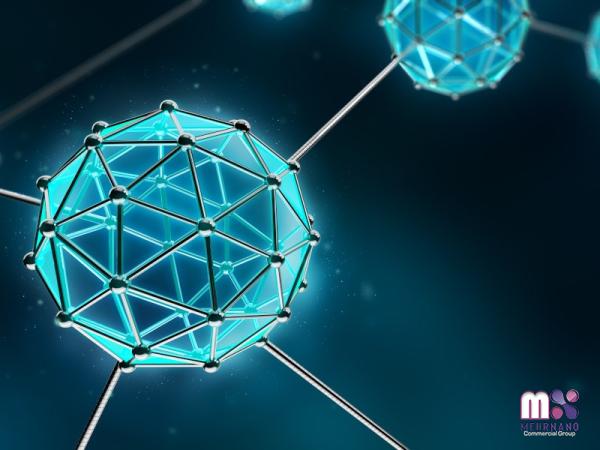
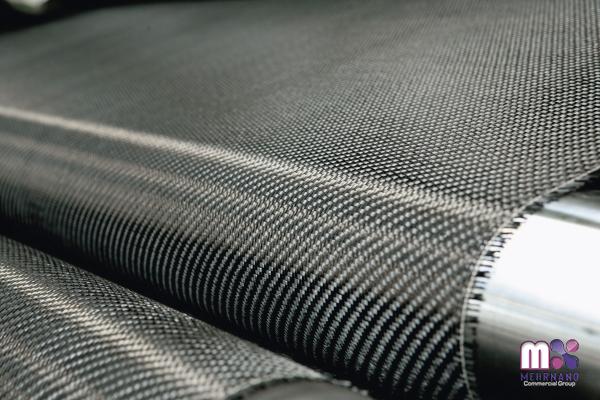

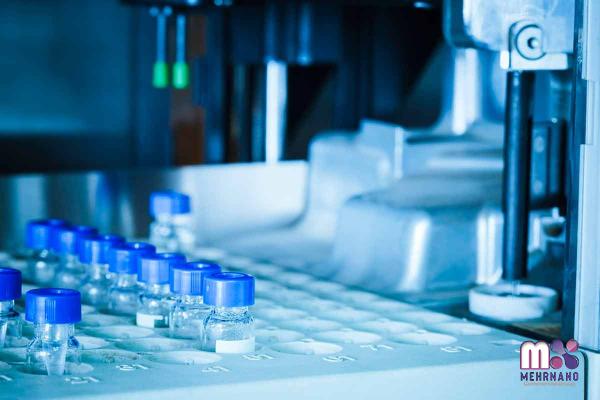

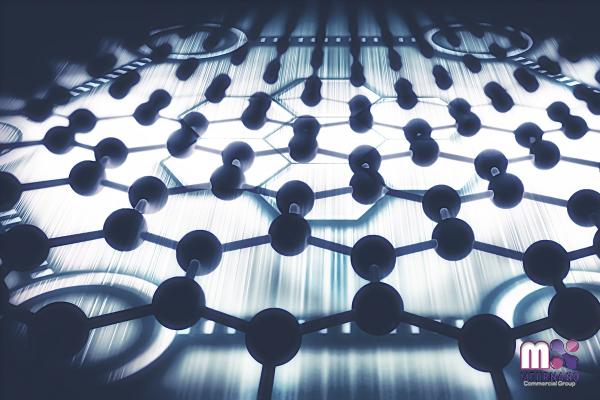

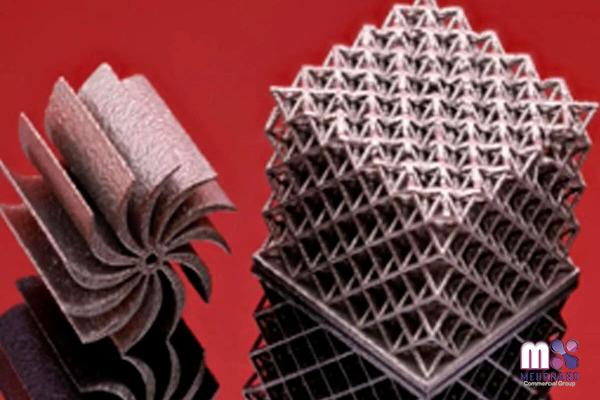
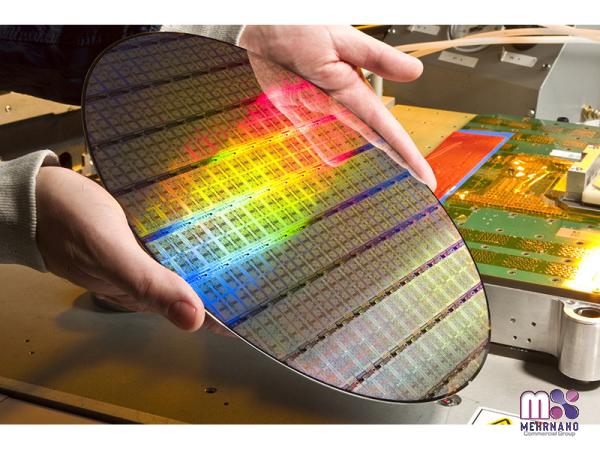

Your comment submitted.